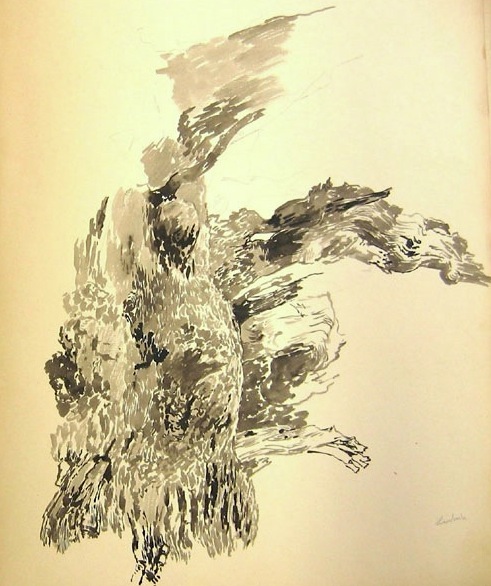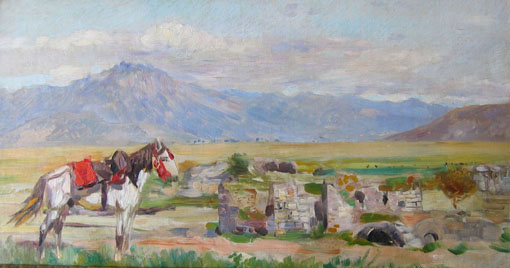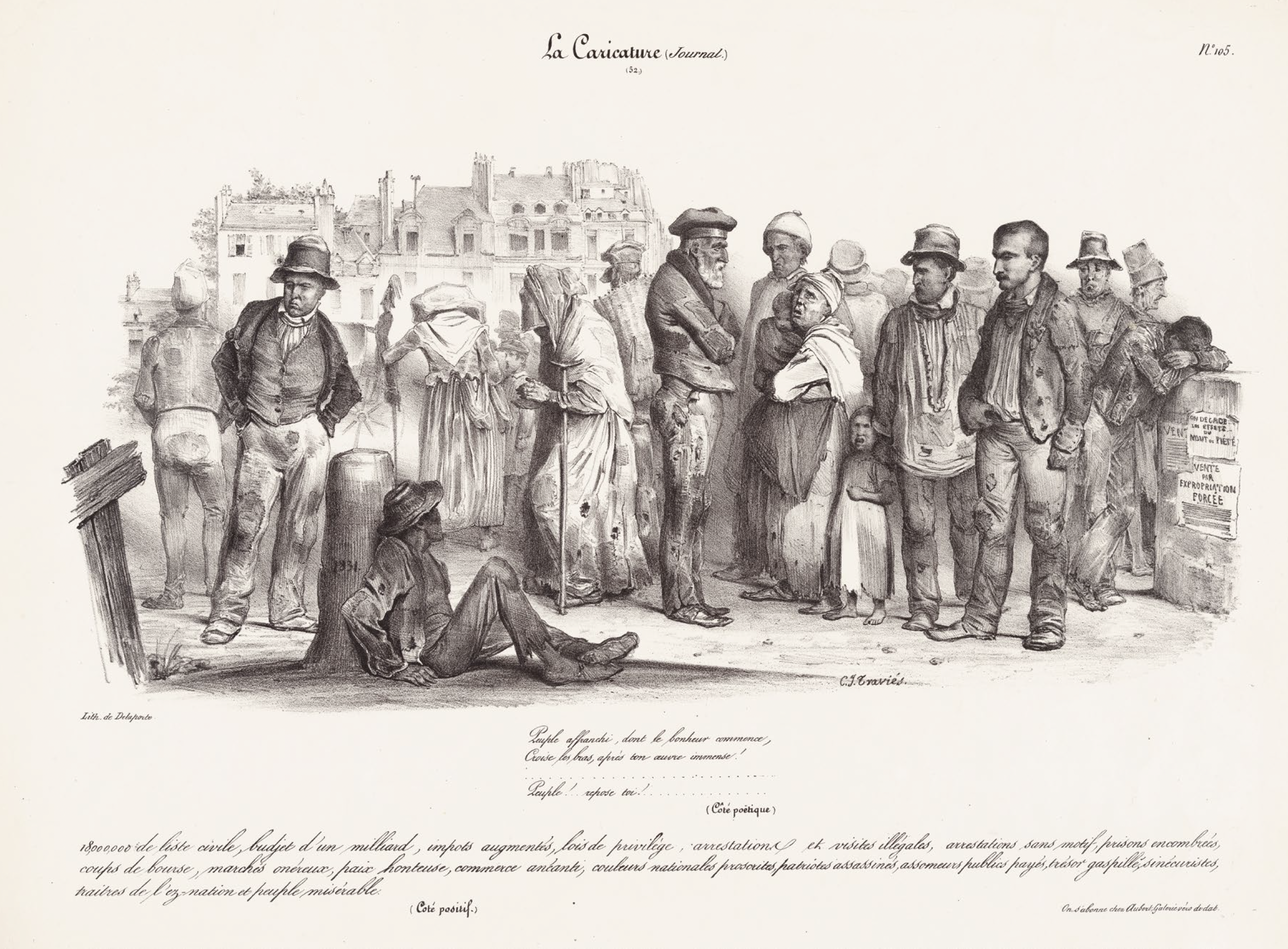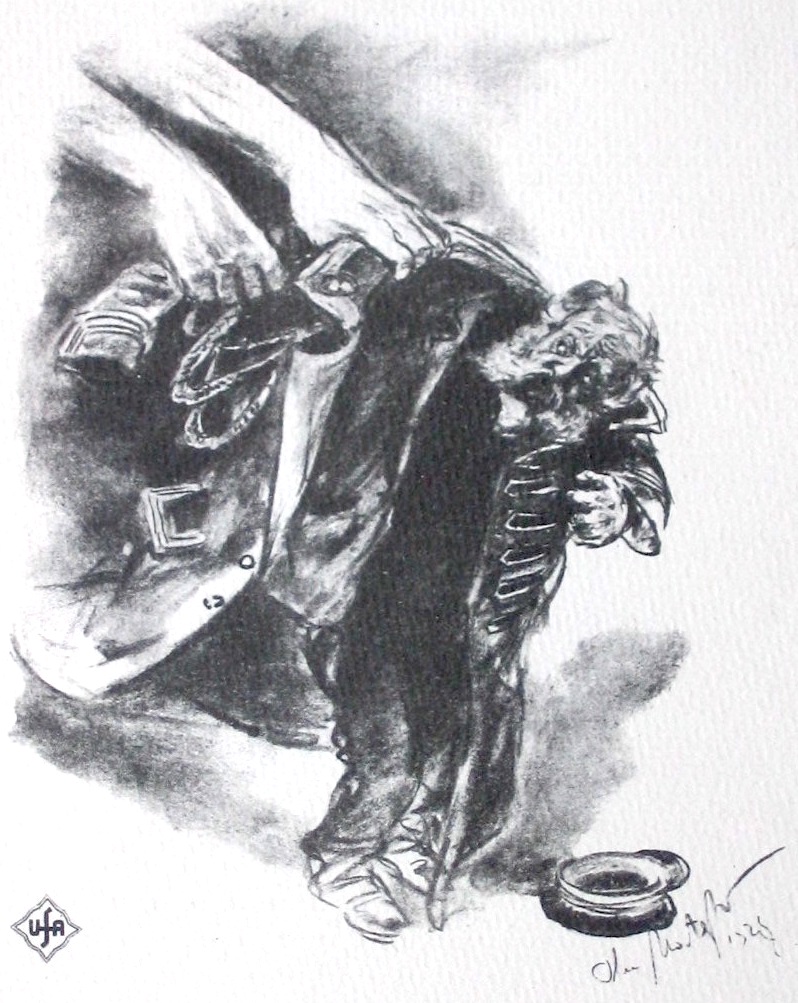Alexander Roob]
[March 30, 2009
Theodor Rocholl – The Broken Historical Painter
It was just always this swaying between a depressed mood and exaggerated self-confidence. This was always caused by the many years of dropping out of society. Something was bent inside me at the time and it never straightened up again. A certain dread of making new acquaintances always impeded me in an extraordinary way and obstructed the path to valuable relationships. And when I then forced myself, an overwrought self-esteem easily set in that cast a totally wrong light on me. ( Ein Malerleben. Erinnerungen von Theodor Rocholl, Berlin 1921)
None of the usual overview publications on the Düsseldorf school of painting mention Theodor Rocholl. Merely the comprehensive, three-volume encyclopaedia edited by the Kunstmuseum Düsseldorf dedicates a monographic entry to the historical painter, a student of the Düsseldorf academy teacher Wilhelm Sohn. 1 He is perceived here as a fringe figure, as a late proponent of a fading tradition of conventional battle scene painting in the Wilhelminian era, who did paintings of the Prussian-French war of 1870, a campaign he allegedly did not participate in. What is noted is the “highly contrasted colouring” of his works, like a “spontaneous and at times unbalanced mode of composition”.
The fact that Rocholl’s oeuvre has many more facets can be established when studying the extensive compilation of drawings and sketches of the artist stored in the collection of the Kunstmuseum; it contains a number of brilliant nature studies as well as a sketchbook with motifs of the Balkan war. From the neglected state of this compilation one can only conclude that it has never been reappraised and probably not inspected for decades.
To deal with Theodor Rocholl in an art historical manner is admittedly a tricky affair. He glares at us from his photographic portrait like a grim Wilhelminian member of the master race with a Nietzsche-style moustache – and the gloomy appearance is by no means deceptive. Rocholl’s worldview, expressed in his autobiographic writings, is entirely imbued with blood and soil. German army and German victory, German horse and German Great Dane – those were the preferred motifs of his paintings, and in his illustrations stiff, meaty Germanic hordes wander through scraggy oak woods. If 80-year-old Rocholl had not fallen victim to a streetcar accident in the year the Nazis seized power, he would probably have been apotheosized during the Third Reich similar to the way younger Arthur Kampf was.
That one tends to stay clear of such a perfect example of an oeuvre filled with ultra-nationalistic and proto-“Brown” motifs is understandable, since one doesn’t want to burn one’s fingers. Yet in face of the striking artistic qualities of Rocholl’s drawings and paintings, which in an international comparison reveal him to be a quite outstanding and idiosyncratic proponent of post-Impressionism, the extent of the ignorance with which his work is encountered, or rather not encountered, is all highly astounding. 2
Im Winter nach dem Manöver des IV. Korps. Federzeichnung. Breslau 1884
Theodor Rocholl was born in 1854 as the son of the Lutheran theologian and philosopher of history Rudolf Rocholl. In the nature pathos of the artist, who was also an early activist of environmental protection, one can find reflexes of an education strongly influenced by pietistic-pantheistic ideas. Rocholl first studied at the Dresdener Akademie with the masters of romantic illusionary art, the old Nazarene Julius Schnorr von Carolsfeld, an acquaintance of his father, and Ludwig Richter. After a year, he went to Munich to Karl von Piloty and switched to the field of national-historical painting. Following a voluntary year with the military in his homeland Hesse, he completed his studies at the Düsseldorfer Kunstakademie. With a figurehead such as Wilhelm Camphausen, Düsseldorf, alongside Berlin, had become a training centre for Prussian military painting, a genre that experienced its heyday in the wake of the victorious campaign against France. Rocholl’s choleric and adventurous nature was attracted by the aura of martialism, and he was soon regarded as one of the biggest talents of a new generation of battle scene painters next to Carl Röchling and Richard Knötel. He had a huge number of commissions, until in spring of 1881 a fight with a fellow student during a carousal in the artists’ society Malkasten brought his hopeful artistic and military career to an abrupt, temporary end. “That evening,” Rocholl wrote in his memoirs, “intervened with a hard and merciless fist in my existence and made me lonesome and misanthropic for years to come.” 3
Nature Studies
The intoxicated row culminated in the demand for a duel, which on the following day took on an official character. When Rocholl, in a rush of insight and reason, decided to avoid the imminent conflict, the affair escalated in a heated quarrel with an involved superior of his reserve regiment. Rocholl, who was appointed a reserve officer at the time, was dishonourably “removed” from the Prussian army by a cabinet decision and advised to leave the artists’ society. He carried the stigma of cowardice, a trauma that haunted the out-and-out militarist up to his old age, when he had long received military badges of honour and – probably at the behest of the emperor – had been officially rehabilitated following the Wilhelminian “Hun” expedition.
The immediate consequence of the duel affair consisted in the battle scene painter being banned from the sphere of salon culture. He no longer received important official commissions, his participation in group exhibitions was thwarted and he stood no chance of winning at competitions. He searched for a way out of this situation. Between 1883 and 1888, he participated as an unofficial pictorial reporter in all imperial manoeuvres and in 1897 took the opportunity of working as a freelance illustrator and war reporter during the Greek-Turkish war in Thessalia. Three years later he was then the official war artist of the German expedition to China sent to put down the anti-colonial Boxer rebellion. In 1909 he was commissioned by the Deutsche Bank to draw the Anatolian part of the Baghdad railway. In 1910 and 1911 he was in the Turkish-Albanian war region for longer periods of time. At the age of over sixty, he then ended his career as a war artist taking part in the First World War. In his “war letters” from the west front in Flanders, which were printed in 1916, he did not avoid describing fear and destruction. However, in the gouaches and watercolours of this propaganda publication, he conveyed the impression of belonging to the idyllists of a war who in the centres of confrontation knew nothing of “green” boy scout romanticism anymore. That this was not the case is revealed by a number of unpublished works in the collection of the Stadtmuseum Hofgeismar that with rare ruthlessness also depict the hardships of this war.
Balkan
His pictorial reportages were partially published in the form of facsimile sketchbooks and partially printed in so-called editions de luxe and newspapers such as the “Leipziger Illustrirten”. The innumerable gouaches, oil paintings and watercolours created during the war expedition, including many portraits and landscapes, are dispersed over a large number of private and public collections.
His activities as a pictorial reporter and the long-distance travels associated with them led to an all but breathtaking liberation of the palette in Rocholl’s work. The speed with which he was often forced to capture his motifs also furthered the development of his feverish, scriptural fashion of painting and drawing. In the liveliness of capturing a retinal impression and the commanding way in which he mastered his painting and drawing means, Rocholl was in no way inferior to an Adolph Menzel, who cast his long shadow on many realistic tendencies of the time. In the challenging coloration, in the inventive handling of textures and the compositional daringness, however, he went far beyond him. In Rocholl’s pictorial reportages, Menzel becomes a Nabi, as it were, and gives a Bonnard and Vuillard his hands.
China- Expedition / Boxer Rebellion
When examining the phenomenon of Rocholl, one quickly comes upon a fundamental contradiction between his ideological demand for a national art cleansed of all “cosmopolitan” influences and his late artistic work. For the shrill, strident painting that his audience had to put up with was by no means the “sympathetic German art” he himself dreamed of.4 How was such a “healthy” artistic plain fare, which was his ideal, to be in a position to prompt critics to make fun of his pictures as “much too colourful for our taste”, to make them complain about the “screaming colour contrasts” that are purely artificial and lack any kind of “appearance of reality”? This was stated in a review in the “General-Anzeiger für Düsseldorf” on 11/19/1904 of a Rocholl exhibition in which predominantly pictures of the China expeditions and the Balkan wars were on view. 5
If one isn’t blinded by Rocholl’s paranoid fear of foreign influences, which even led him to “Germanize” all common foreign words in his memoirs, then one can indeed find indications in his writings of a great appreciation and empathy for other cultures, especially in Chinese and Japanese art. In regard to this interest, which quite obviously began to show in his painting, Rocholl was indeed in line with the “cosmopolitan” spirit of the age that he hated so much.
Apart from that, however, he had little in common with the other proponents of German Impressionism and post-Impressionism. One notices in his paintings that they do not follow any stylistic models. It is foremost retinal precision to which he was dedicated. What is so outstanding about his pictorial reportages is that he additionally reaches a degree of painterly freedom in the formal, patchwork-like structure of the image space that already heralds Abstract Expressionism. In the widely ramified thicket of the Düsseldorf school of painting, Rocholl is the one who reaches farthest to the present-day in terms of painting.
1) Lexikon der Düsseldorfer Malerschule 1819 – 1918. Bd. III. München 1998
2) In der nordhessischen Provinz, wohin sich Rocholl nach dem 1. Weltkrieg zurückgezogen hatte, betreibt man mit Elan und Enthusiasmus, was anderen Orts versäumt wird. Seit mehr als dreißig Jahren baut hier der ehrenamtliche Direktor des Hofgeismarer Stadtmuseums (https://www.museum-hofgeismar.de/w3a/cms/Home/index.19.html) Helmut Burmeister neben einer hochkarätigen Sammlung zur Geschichte der Hugenotten in Deutschland auch eine substantielle Rocholl-Sammlung mit umfangreichem Archivmaterial auf. Diese Sammlung wurde dort bereits in mehren thematischen Ausstellung vorgestellt. Es wird Zeit, dass sie die überregionale Beachtung findet, die ihr zusteht.
3) Theodor Rocholl: Ein Malerleben. Berlin 1921, S. 68
4) Theodor Rocholl u.a.: Kriegsfahrten deutscher Maler. Selbsterlebtes im Weltkrieg 1914 – 1915. Bielefeld / Leipzig 1916, S.77
5) zitiert nach: Helmut Burmeister: China 1900. Der Boxeraufstand, der Maler Theodor Rocholl und das alte China, Hofgeismar 2000, S. 84
—————————————————————————————————————
In der MePri – Collections:
by Theodor Rocholl
– Im Winter nach dem Manöver des IV. Korps, 2 Federzeichnungen auf Blatt recto und verso, 27 x 40 cm. Breslau 1884 (abgebildet in “Ein Malerleben”)
J.v.Pflugk – Harttung: Krieg und Sieg 1870 – 71. Ein Gedenkbuch. Berlin 1886
Illustrirte Zeitung. Leipzig, Jhg.1887
Theodor Rocholls Skizzenbuch vom griechisch – türkischen Kriegsschauplatz. Leipzig 1897
Bearbeitet von Expeditionsteilnehmern und illustriert von Th. Rocholl: Deutschland in China 1900 – 1901. Düsseldorf 1902
Heinrich Hübner: Rudolf Rocholl.: Ein Lebens- und Charakterbild auf Grund seines schriftlichen Nachlasses und anderer erster Quellen. Illustriert von Theodor Rocholl. Elberfeld 1910
– : Studie aus Milet, Öl auf Lwd, 57 x 31 cm, Milet 1910 (rückseitig beschriftet : mein Pferdchen .. vor der Ruine eines türkischen Bades, im Hintergrund der Latinio)
Theodor Rocholl u.a.: Kriegsfahrten deutscher Maler. Selbsterlebtes im Weltkrieg 1914 – 1915. Bielefeld / Leipzig 1916
Theodor Rocholl: Ein Malerleben. Erinnerungen von Theodor Rocholl. Berlin 1921
on Theodor Rocholl
Helmut Burmeister hrsg: China 1900. Der Boxeraufstand, der Maler Theodor Rocholl und das ” alte China “, Hofgeismar 2000
Helmut Burmeister hrsg: Begegnungen im Märchenwald. Der Maler Theodor Rocholl und der Reinhardswald, Hofgeismar 2004
Bernd Küster u.a.: Der Erste Weltkrieg und die Kunst, Oldenburg 2008
on the German Historical Painting of the 19th and 20th Century (a selection)
Franz Kugler / Adolph Menzel: Geschichte Friedrichs des Grossen. Leipzig 1840 und 1842 (1. und 2. Auflage)
Ludwig Hahn / Wilhelm Camphausen: Friedrich der Große. Für das deutsche Volk dargestellt. Berlin 1855
Wilhelm Camphausen: Ein Maler auf dem Kriegsfelde. Düppel und Alsen 1864. Illustriertes Tagebuch. Bielefeld und Leipzig 1865
Adolph Menzel / Eduard Kretzschmar: Aus König Friedrichs Zeit. Kriegs – und Friedenshelden, Berlin 1886
Paul Kittel / Richard Knötel: Unser Vaterland in Waffen, Berlin 1895 (2 Bd.)
Moderne Kunst in Meister-Holzschnitten. Nr. 16, Leipzig 1900 (mit einer Bildreportage zur Meisterklasse von Anton von Werner)
Paul Kittel hrsg. mit Illustrationen von Carl Röchling, Richard Knötel u.a.: Die Deutschen Befreiungskriege 1806 – 1815, Berlin 1901 (2 Bd.)
Richard Bong hrsg. Der Krieg 1914/16 in Wort und Bild. Berlin – Leipzig – Wien 1916 ( 2 Bd.)
Bruno Cassirer hrsg. : Kriegszeit . Künstlerflugblätter. 1914 /15
Bruno Kroll hrsg.: Arthur Kampf. Bielefeld 1944
Ulrike von Haase – Schmundth: Albrecht Adam und seine Familie. Zur Geschichte einer Münchner Künstlerdynastie im 19. und 20. Jahrhundert. München 1982
Werner Hoffmann: Menzel der Beobachter, München 1982
Kat.: Adolph Menzel – Zeichnungen, Druckgrafik und illustrierte Bücher. Berlin 1984
Gisold Lammel: Preussens Künstlerrepublik von Blechen bis Liebermann. Berlin 1995
Wolfgang Hütt: Die Düsseldorfer Malerschule. Leipzig 1995
Thomas Gaethgens / Uwe Fleckner: Geschichte der klassischen Bildgattungen in Quellentexten und Kommentaren. Die Historienmalerei. Mit Textbeiträgen in italienischer, niederländischer, französischer und spanischer Sprache. Berlin 1996
D. Bartmann hrsg.: Anton von Werner. Geschichte in Bildern. München 1997
Stefan Germer / Michael F. Zimmermann hrsg: Macht der Bilder – Bilder der Macht. Zeitgeschichte in Darstellungen des 19. Jahrhunderts. München und Berlin 1997
Bernard Comment: Das Panorama. Die Geschichte einer vergessenen Kunst. Berlin 2000
Reinhold Baumstark / Frank Büttner hrsg : Grosser Auftritt. Piloty und die Historienmalerei. München 2003
Jörg Probst: Adolph von Menzel – die Skizzenbücher. Berlin 2005





































